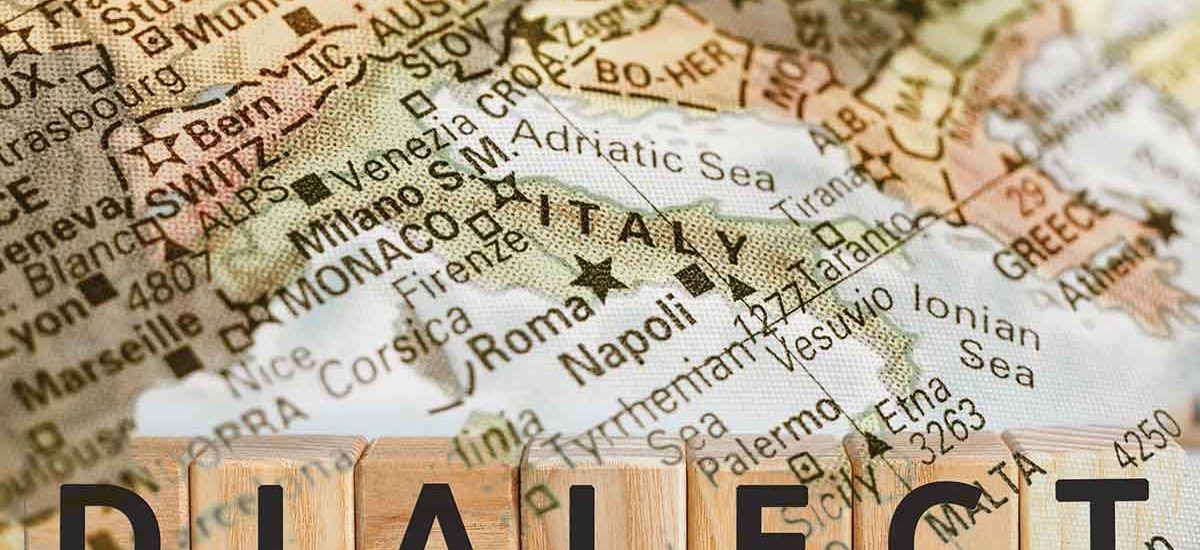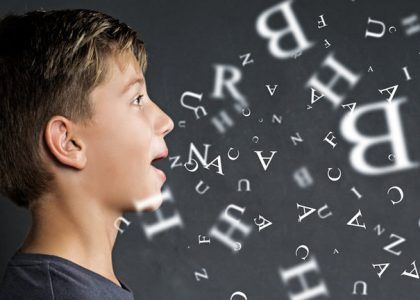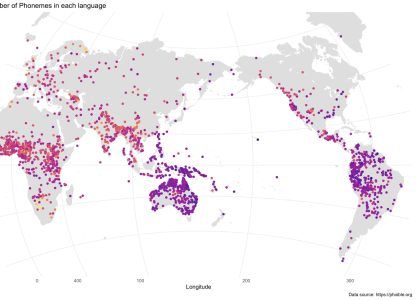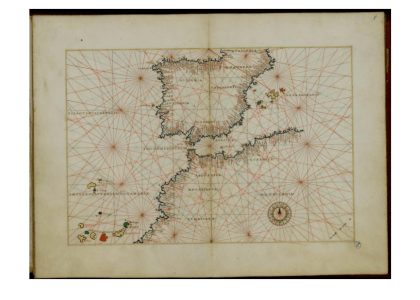dialect, a variety of a language that signals where a person comes from. The notion is usually interpreted geographically (regional dialect), but it also has some application in relation to a person’s social background (class dialect) or occupation (occupational dialect). The word dialect comes from the Ancient Greek dialektos “discourse, language, dialect,” which is derived from dialegesthai “to discourse, talk.” A dialect is chiefly distinguished from other dialects of the same language by features of linguistic structure—i.e., grammar (specifically morphology and syntax) and vocabulary. In morphology (word formation).
Although some linguists include phonological features (such as vowels, consonants, and intonation) among the dimensions of dialect, the standard practice is to treat such features as aspects of accent.
Frequently, the label dialect, or dialectal, is attached to substandard speech, language usage that deviates from the accepted norm. On the other hand, the standard language can also be regarded as one of the dialects of a given language, though one that has attracted special prestige. In a historical sense, the term dialect is sometimes applied to a language considered as one of a group deriving from a common ancestor. Thus, Dutch, English, and German are sometimes treated as Germanic dialects.
There is often considerable difficulty in deciding whether two linguistic varieties are dialects of the same language or two separate but closely related languages; this is especially true in parts of the world where speech communities have been little studied. In these cases especially, decisions regarding dialects versus languages must be to some extent arbitrary.
Normally, dialects of the same language are considered to be mutually intelligible, while different languages are not. Intelligibility between dialects is, however, almost never absolutely complete. On the other hand, speakers of closely related languages can still communicate to a certain extent when each uses his own mother tongue. Thus, the criterion of intelligibility is quite relative. In more-developed societies the distinction between dialects and related languages is easier to make because of the existence of standard languages.
Sometimes sociopolitical factors play a role in drawing the distinction between dialect and language. Linguistic varieties that are considered dialects in one set of historical circumstances may be considered languages in another. Before the ethnic conflicts in the Balkans in the 1990s, Serbo-Croatian was viewed by its speakers as a single language consisting of several dialects, spoken in Serbia, Bosnia and Herzegovina, and Croatia; afterward, local communities began to talk of Croatian and Serbian as distinct languages.
Varieties of dialects
Geographic dialects
The most widespread type of dialectal differentiation is regional, or geographic. As a rule, the speech of one locality differs at least slightly from that of any other place. Differences between neighbouring local dialects are usually small, but, in traveling farther in the same direction, differences accumulate. Every dialectal feature has its own boundary line, called an isogloss (or sometimes heterogloss). Isoglosses of various linguistic phenomena rarely coincide completely, and by crossing and interweaving they constitute intricate patterns on dialect maps. Frequently, however, several isoglosses are grouped approximately together into a bundle of isoglosses. This grouping is caused either by geographic obstacles that arrest the diffusion of a number of innovations along the same line or by historical circumstances, such as political borders of long standing, or by migrations that have brought into contact two populations whose dialects were developed in noncontiguous areas.
Social dialects
Another important axis of differentiation is that of social strata. In many localities, dialectal differences are connected with social classes, educational levels, or both. More-highly educated speakers and, often, those belonging to a higher social class tend to use more features belonging to the standard language, whereas the original dialect of the region is better preserved in the speech of the lower and less-educated classes. In large urban centres, innovations unknown in the former dialect of the region frequently develop. Thus, in cities the social stratification of dialects is especially relevant and far-reaching, whereas in rural areas, with a conservative way of life, the traditional geographic dialectal differentiation prevails.
Educational differences between speakers strongly affect the extent of their vocabulary. In addition, practically every profession has its own expressions, which include the technical terminology and sometimes also the casual words or idioms peculiar to the group. Slang too is characterized mainly by a specific vocabulary and is much more flexible than an ordinary dialect, as it is subject to fashion and depends strongly on the speaker’s age group. Slang—just as a professional dialect—is used mainly by persons who are in a sense bidialectal; i.e., they speak some other dialect or the standard language, in addition to slang. Dialectal differences also often run parallel with the religious or racial division of the population.
Dialectal change and diffusion
The basic cause of dialectal differentiation is linguistic change. Every living language constantly undergoes changes in its various elements. Because languages are extremely complex systems of signs, it is inconceivable that linguistic evolution could affect the same elements and even transform them in the same way in all localities where one language is spoken and for all speakers in the same locality. At first glance, differences caused by linguistic change seem to be slight, but they inevitably accumulate with time (e.g., compare Chaucer’s English with modern English or Latin with modern Italian, French, Spanish, or Romanian). Related languages usually begin as dialects of the same language.
When a change (an innovation) appears among only one section of the speakers of a language, this automatically creates a dialectal difference. Sometimes an innovation in dialect A contrasts with the unchanged usage (archaism) in dialect B. Sometimes a separate innovation occurs in each of the two dialects. Of course, different innovations will appear in different dialects, so, in comparison with its contemporaries, no one dialect as a whole can be considered archaic in any absolute sense. A dialect may be characterized as relatively archaic because it shows fewer innovations than the others, or it may be archaic in one feature only.
After the appearance of a new dialectal feature, interaction between speakers who have adopted this feature and those who have not leads to the expansion or the curtailment of its area or even to its disappearance. In a single social milieu (generally the inhabitants of the same locality, generation, and social class), the chance of the complete adoption or rejection of a new dialectal feature is very great; the intense contact and consciousness of membership within the social group fosters such uniformity. When several age groups or social strata live within the same locality and especially when people speaking the same language live in separate communities, dialectal differences are easily maintained.
The element of mutual contact plays a large role in the maintenance of speech patterns; that is why differences between geographically distant dialects are normally greater than those between dialects of neighbouring settlements. This also explains why bundles of isoglosses so often form along major natural barriers—impassable mountain ranges, deserts, uninhabited marshes or forests, or wide rivers—or along political borders. Similarly, racial or religious differences contribute to linguistic differentiation because contact between members of one faith or race and those of another within the same area is very often much more superficial and less frequent than contact between members of the same racial or religious group. An especially powerful influence is the relatively infrequent occurrence of intermarriages, thus preventing dialectal mixture at the point where it is most effective—namely, in the mother tongue learned by the child at home.
Unifying influences on dialects
Communication lines such as roads (if they are at least several centuries old), river valleys, or seacoasts often have a unifying influence. Also, important urban centres, such as Paris, Utrecht, or Cologne, often form the hub of a circular region in which approximately the same dialect is spoken. In such areas, the prestige dialect of the city has obviously expanded. As a general rule, those dialects, or at least certain dialectal features, with greater social prestige tend to replace those that are valued lower on the social scale.
In times of less-frequent contact between populations, dialectal differences increase; in periods of greater contact, they diminish. The general trend in modern times is for dialectal differences to diminish, above all through the replacement of dialectal traits by those of the standard language. Mass literacy, schools, increased mobility of populations, and, more recently, the ever-growing role of mass communications all contribute to this tendency. Naturally, the extent of such unifying action varies greatly in different linguistic domains. Also, the arrival of immigrant groups, especially in growing urban complexes, has increased dialect differentiation somewhat. Nevertheless, the most thorough example of linguistic force exerted by a single dominating civilization belongs to ancient times: in the Hellenistic era, almost all ancient Greek dialects were replaced by the so-called Koine, based on the dialect of Athens.
Mass migrations may also contribute to the formation of a more or less uniform dialect over broad geographic areas. Either the resulting dialect is that of the original homeland of a particular migrating population, or it is a dialect mixture formed by the leveling of differences between migrants from more than one homeland. The degree of dialectal differentiation depends to a great extent on the length of time a certain population has remained in a certain place. Thus, it is understandable that the diversification of the English language is far greater in the British Isles than, for example, in North America (especially if the number of dialectal differences is considered on a comparable area basis, such as the number per 1,000 square miles). In the United States itself much greater diversity is evident between dialects in old colonial America—along the Atlantic coast—than between dialects west of the Appalachians. It is also typical that phonological differences are more far-reaching in Switzerland between Swiss-German dialects than throughout the vast territory where the Russian language is spoken, extending from St. Petersburg to eastern Siberia. Such a situation results not only from migrations of the Russian population (as compared with the centuries of Swiss stability) but also from the contrasting geographic configurations: in Russia there is unobstructed communication in many directions; in mountainous Switzerland the territory is carved into small isolated units.
Migrations and, more rarely, geographic phenomena may in some areas cause a much stronger dialectal differentiation in one direction than in others. Isoglosses in the United States, for example, run predominantly in an east-west direction, reflecting the westward stream of migration during the colonization of areas west of the Appalachians. Similarly, the majority of isoglosses in Russia follow latitude, but in the opposite (west-east) direction.
References: Britannica, Wikipedia…





